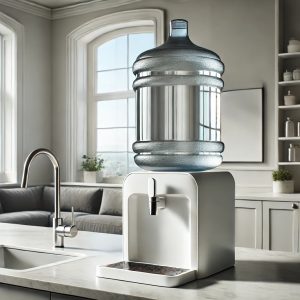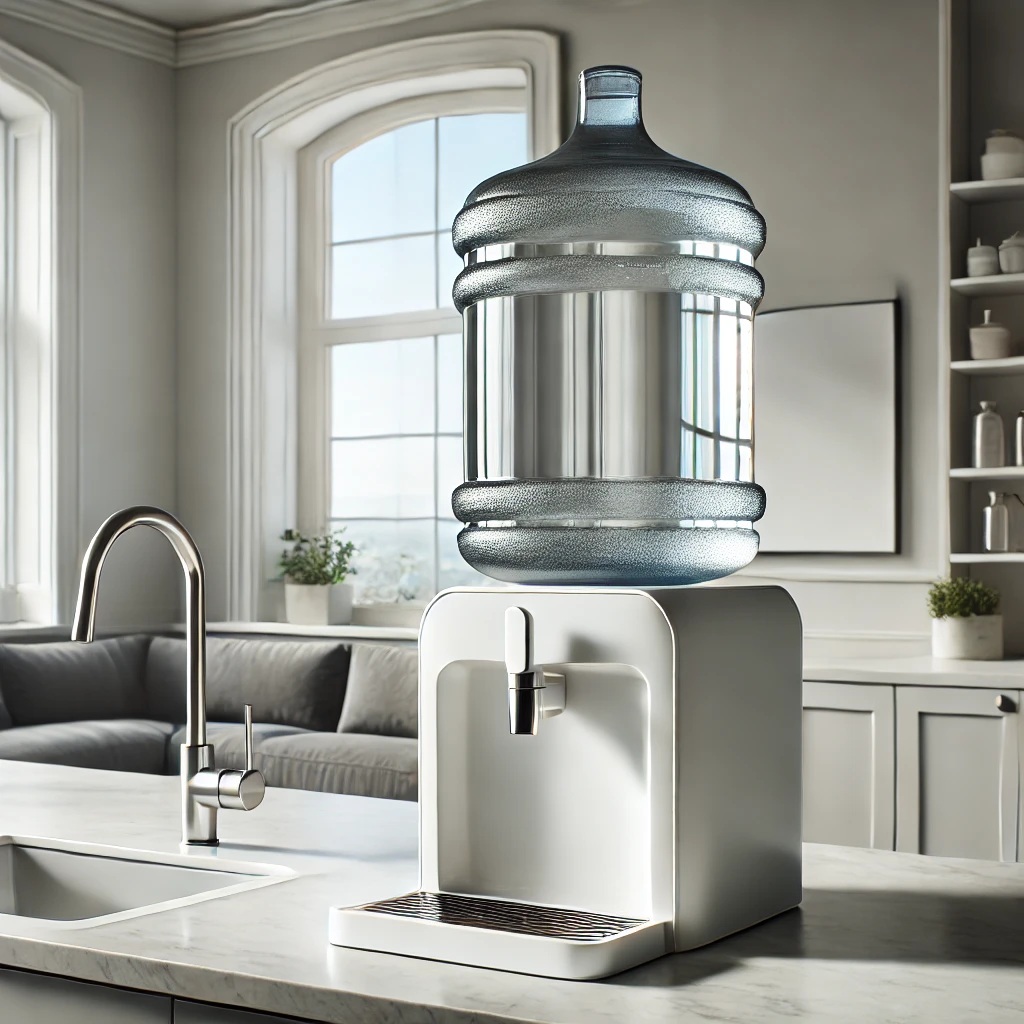
In today’s world, the choices we make about how we drink water carry more weight than ever before. For many years, bottled water has been the go-to solution for convenience, but the environmental cost has grown, making it impossible to ignore. Plastic waste, high energy usage, and constant deliveries create a ripple effect that harms our planet.
On the other hand, water dispensers—whether bottom-loading, countertop, or plumbed-in—are changing how families and businesses hydrate. They’re not just about convenience; they’re about sustainability, health, and aligning daily routines with values that matter.
Let’s explore the true environmental impact of bottled water versus water dispensers, and why making the switch could be one of the simplest yet most powerful eco-conscious choices you can make.
Why Does Bottled Water Carry Such a Heavy Environmental Cost?
At first glance, bottled water feels clean and safe. It’s portable, sealed, and readily available. But the journey of a single plastic water bottle is long—and wasteful.
-
Plastic production: Manufacturing PET plastic bottles consumes enormous amounts of fossil fuels. For every liter of bottled water produced, about three liters of water are used in the process.
-
Transportation footprint: Bottled water must be delivered repeatedly, whether through retail supply chains or home/office delivery services. This results in trucks on the road, fuel consumption, and increased emissions.
-
Waste crisis: Globally, over 480 billion plastic bottles are used every year, yet less than 30% are recycled. The rest often end up in landfills, waterways, or oceans.
For health-conscious consumers, the reality is unsettling: a product marketed as “pure” or “clean” may be contributing to widespread environmental pollution.
How Do Water Dispensers Reduce Environmental Impact?
Switching to a water dispenser reduces your environmental footprint in several meaningful ways.
-
Fewer single-use plastics: Instead of going through hundreds or even thousands of disposable bottles per year, dispensers use larger refillable jugs or direct plumbing connections. This dramatically cuts plastic waste.
-
Lower transportation demand: A dispenser system eliminates the need for constant delivery of small bottles. Even when larger water jugs are delivered, the efficiency is far greater—one truckload of 5-gallon bottles replaces thousands of single-use bottles.
-
Energy efficiency: Modern dispensers are designed to use less energy while still providing hot and cold water on demand.
-
Sustainable hydration habits: Having a water dispenser in your home or office makes it easier to refill reusable cups or bottles, aligning personal habits with environmental responsibility.
Think of it this way: one water dispenser can save hundreds of pounds of plastic waste over its lifetime.
What Benefits Do Home & Office Users Gain Beyond Sustainability?
For families and workplaces, the decision to switch to a water dispenser isn’t just about reducing waste—it’s also about lifestyle improvement.
-
Health-conscious hydration: Easy access to filtered, clean water encourages people to drink more, staying hydrated without reaching for sugary drinks.
-
Convenience: No more lugging heavy cases of bottled water or waiting for frequent deliveries. A dispenser provides hot and cold water instantly.
-
Cost savings: While bottled water seems inexpensive per unit, costs add up quickly. A dispenser spreads its cost over time, often making it the more economical option.
-
Space-saving: Instead of cluttered cases of bottles, you free up pantry or office storage space.
This intersection of eco-friendliness, health, and convenience is what makes dispensers so appealing to modern consumers.
How Is the Bottled Water Delivery Industry Responding?
The bottled water delivery industry is undergoing a transformation. Forward-thinking providers recognize that their customers want sustainability without sacrificing service. Many are pivoting toward hybrid models that emphasize water dispensers and bulk refill systems.
Some companies now:
-
Deliver reusable 3- or 5-gallon jugs instead of single-use bottles.
-
Offer maintenance and filtration services for plumbed-in dispensers.
-
Educate customers on how switching reduces carbon footprints and plastic waste.
By making this shift, the industry stays relevant while also helping households and businesses align with eco-conscious values.
What’s the Long-Term Impact of Making the Switch?
The numbers speak for themselves:
-
A family of four consuming bottled water may go through 1,200–1,500 bottles per year. Switching to a dispenser cuts that down to a handful of refillable jugs.
-
Offices with 20 employees could save tens of thousands of bottles annually, while also promoting wellness among staff.
-
Over 10 years, one dispenser could keep several tons of plastic out of landfills and oceans.
The long-term effect isn’t just about waste—it’s about shifting collective behavior. Every time someone chooses to refill their glass at a water dispenser instead of opening a new bottle, it sends a message: health and sustainability go hand in hand.
Frequently Asked Questions (FAQ)
1. Do water dispensers use a lot of electricity?
Modern water dispensers are surprisingly energy efficient. Most models use the same amount of electricity as a standard light bulb, especially if equipped with energy-saving features.
2. What happens to the large water jugs used with dispensers?
Unlike single-use bottles, these jugs are designed to be reused multiple times. After use, they’re sanitized, refilled, and re-circulated—significantly reducing plastic waste.
3. Are plumbed-in water dispensers better for the environment than bottled ones?
Yes, plumbed-in systems connect directly to your water line and use filtration, eliminating plastic altogether. However, bulk jug delivery systems are still a major improvement over single-use bottles.
4. Is the water from dispensers safe and healthy?
Absolutely. Water dispensers often include built-in filtration systems that remove contaminants while preserving essential minerals. For health-conscious consumers, this provides peace of mind.
5. How do dispensers compare to bottled water in cost?
While bottled water may seem cheaper upfront, costs add up quickly. A dispenser typically pays for itself in savings within a year or two, especially for households and offices that consume high volumes of water.
6. Can offices encourage better hydration habits with dispensers?
Yes. Having a dispenser in the workplace makes water more accessible and appealing, which leads to higher water intake and better employee wellness.
7. What if I live in an area without water delivery services?
Plumbed-in dispensers are a great alternative. They use your tap water, filter it, and provide instant hot/cold options. This is often the most eco-friendly and convenient solution.
8. Does switching to a dispenser really make a difference for the planet?
Yes. One household or office may feel small, but multiplied by millions of users, the impact is enormous. Every refillable jug replaces dozens of single-use bottles, reducing both plastic waste and carbon emissions.
9. How often should a dispenser be cleaned?
To ensure water safety, dispensers should be cleaned every 6–8 weeks. Many delivery companies offer cleaning services as part of their maintenance plans.
10. Are smart water dispensers worth the upgrade?
For tech-savvy and eco-conscious users, smart dispensers provide tracking of water usage, reminders for cleaning, and even integration with office wellness programs. While not essential, they can be a valuable upgrade.
Final Thoughts: Why Making the Switch Matters
Switching from bottled water to a dispenser may feel like a small change, but its impact is far-reaching. It’s a decision that reduces plastic waste, lowers emissions, saves money, and improves daily life. For health-conscious families, it means cleaner water without guilt. For offices, it means healthier employees and greener operations.
The bottled water delivery industry is already adapting, offering smarter, more sustainable options to meet this growing demand. By choosing a dispenser, you’re not just making life easier—you’re joining a movement toward a healthier planet.
